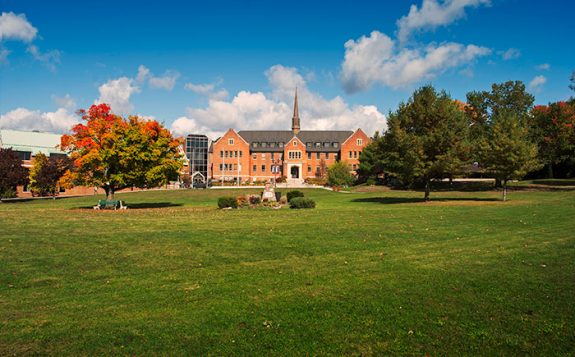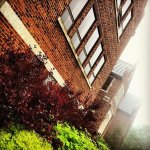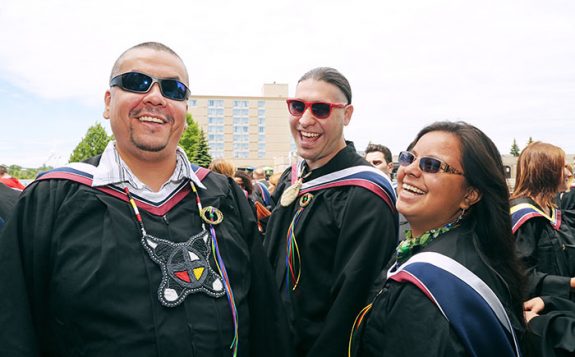(SAULT STE. MARIE, ON – February 3, 2017): Today, Algoma University officially proclaims our support for the Calls to Action…and beyond. We pledge to our partners that we will continue to work with you to bring Survivors and those affected intergenerationally to our campus to continue the work of healing and reconciliation through the educational work that you started initially through the Keewatinung Institute, and formally with us in 1979 with the Shingwauk Project.
We will adhere to our recently approved Strategic Plan, which prominently features the Seven Grandfather teachings of Nibwaakaawin (Wisdom), Zaagi’idiwin (Love), Minaadendamowin (Respect), Aakode’ewin (Bravery), Gwayakwaadiziwin (Honesty), Dabaadendiziwin (Humility), and Debwewin (Truth). We will position Anishinaabe Inendamowin (Thought) as one of the key strategic priorities for the institution.
During 2017, a year marking the 150th anniversary of Canadian Confederation, in collaboration with the Children of Shingwauk Alumni Association, we will install a museum exhibition throughout the main floor (third floor) of Shingwauk Hall to commemorate the history of the Shingwauk Indian Residential School and the Survivors. (Call to Action: Museums and Archives.) This will bolster our capacity to provide public education on the history of the Shingwauk site and the larger national Residential Schools and colonial contexts. (Calls to Action: Commemoration.)
Since the signing of the Covenant with the Shingwauk Education Trust in 2006, Algoma University has been working with Shingwauk Kinoomaage Gamig, a sister institution on the Shingwauk site, to further Anishinaabe control of Anishinaabe Education. We offer the first and only full university degree in an Aboriginal language in Canada, the Anishinaabemowin degree. With Shingwauk Kinoomaage Gamig, we are working towards an Anishinaabe Studies degree and other specialized programming around Anishinaabe issues. We pledge to continue to work closely with Shingwauk Kinoomaage Gamig towards the true realization of Chief Shingwauk’s “Teaching Wigwam” vision. (Calls to Action: Language and Culture.)
Algoma University will continue to develop programming using advisory committees with significant Anishinaabe membership and including significant Anishinaabe content, such as our Community Economic and Social Development degree and our Bachelor of Social Work. In 1986, a community committee, the Aboriginal Education Committee, started the development on campus of what is today a full range of support services for Anishinaabe students. We will seek continual improvement of these services, including supports for transition into the workplace. As well, we will bolster our capacity to engage in research and education that supports healing and reconciliation. We will build on our significant archival and library collections and we will hire a research chair in Healing and Reconciliation. (Calls to Action: Education.)
We will review our policies and practices through an UNDRIP lens (United Nations Declaration of the Rights of Indigenous Peoples). (Calls to Action: Settlement Parties and UNDRIP.)
We will use our influence to support local, regional, and national efforts across different sectors to realize true reconciliation. We have both the grassroots and scholarly expertise and experience to assist many others in their efforts to address the Calls to Action and beyond. (Calls to Action: Education for Reconciliation.)
Through the work of the Shingwauk Residential Schools Centre, we pledge to support all parties interested in honouring the children who never returned home and in supporting their families. Our ongoing efforts to commemorate and memorialize can also inform others’ work toward those ends (Calls to Action: Commemoration.)
Most importantly, we pledge to go beyond the Calls to Action and to work with the Children of Shingwauk Alumni Association and Shingwauk Kinoomaage Gamig to define what this will mean for us.
For more information, read the entire Algoma University Statement on Truth and Reconciliation: Calls to Action and Beyond (PDF).
Share Article



